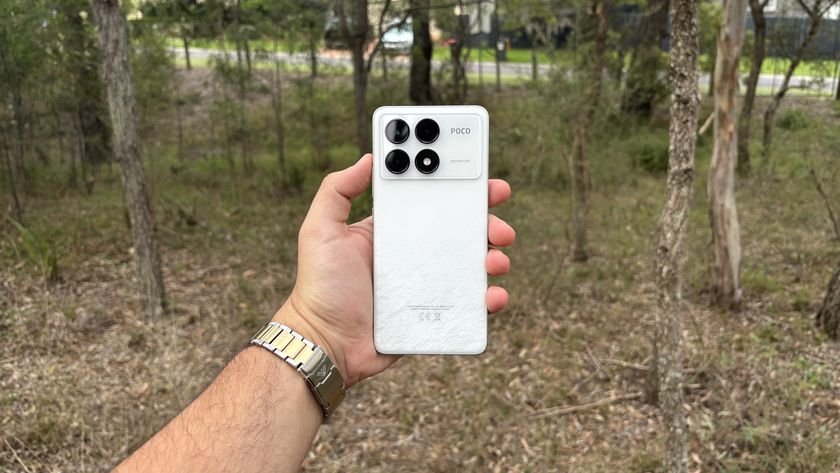Online pornography: what's legal and what's not
Bad porn dialogue is in, but sexting is out. So say bye-bye to your Snapchat and 'private' Instagram accounts

It's August, and David Cameron's family-friendly domestic internet blocks are rolling out across the UK.
Part of a larger government initiative to prevent "poisonous" pornography websites from "corroding childhood", these filters will make online adult content opt-in only, and possessing extreme material - such as images depicting rape or violence - will become a criminal offence.
Some customers of newly filtered ISPs are finding that porn is still getting through, but bona fide sites are being blocked. That's because filter algorithms struggle to distinguish between porn and legitimate sites, like lingerie retailers.
"None of these systems are perfect," says George Anderson from online filtering security firm Webroot. "If you're an underwear site that's pretty close [to a porn site] and you get blocked because of this ban, that's going to cause issues."
But what does the new legislation mean for the vast majority of home users who can still access everything online? Here at TechRadar we don't endorse non-consensual or abusive material in any way, but could you browse yourself into trouble without realising?
In 2011 alone there were 1,337 prosecutions under section 63 of the Criminal Justice and Immigration Act 2008 (possession of extreme pornography). To help you avoid becoming one of the 2013 statistics, here's a quick rundown of what's legal and what's not under the new online guidelines.
Possession of extreme pornography
It is illegal to possess depictions of 'extreme pornography' in England and Wales under Section 63 of the Criminal Justice and Immigration Act 2008. The Crown Prosecution Service (CPS) describes 'extreme pornography', broadly, as an image that:
Get daily insight, inspiration and deals in your inbox
Sign up for breaking news, reviews, opinion, top tech deals, and more.
● Is realistic
● Is produced solely or principally for the purposes of sexual arousal
● Includes necrophilia, bestiality, or depicts life-threatening acts, or serious harm to the breasts, anus or genitals
● Is deemed by a jury or magistrate to be "grossly offensive"
Does this mean you can't watch French art house films late at night any more? Mais non, lusty Francophiles, you're fine. British Board of Film Classification (BBFC)-approved films are exempt, as long as the scenes stay within the film itself.
What's legal to watch as part of a film could break the law out of context
If you make clips of the dirty bits out of context, however, the legal situation changes. The CPS guidelines say: "The exclusion does not apply in respect of images contained within extracts from classified films which must reasonably be assumed to have been extracted solely or principally for the purposes of sexual arousal."
So watching Betty Blue is fine, but turning the sex scenes into a gif is prosecutable. And if you were to share the gif online, that would count as an obscene publication.
Indecent photographs of children
Images of child abuse are, of course, illegal. In 2010 there were 1,781 cautions and convictions for the making, distribution and possession of indecent images of children under section 1 of the Protection of Children Act 1978 and section 160 of the Criminal Justice Act 1988.
According to the Internet Watch Foundation's 2010 annual report, 73% of the images they saw featured children under the age of ten. However, the act also covers "pseudo-photographs", which means mock-ups are also prosecutable.
Prosecutions under this law can be made as an alternative to the extreme pornography act.
A recent trend has seen hackers using legitimate adult websites to host images of child abuse and directing unwitting punters to them.
- If you stumble across images of child abuse, pseudo- or otherwise, report them to the IWF here.
Obscene publications
The number of prosecutions under the Obscene Publications Act 1959 has fallen from 309 in 1994 to just 35 in 2005. The most commonly prosecuted material includes scenes that depict:
- Sexual acts with an animal
- Realistic portrayals of rape
- Sadomasochistic material which goes beyond trifling and transient infliction of injury
- Torture with instruments
- Bondage (especially where gags are used with no apparent means of withdrawing consent)
- Dismemberment or graphic mutilation
- Activities involving perversion or degradation (such as drinking urine, urination or vomiting on to the body, or excretion or use of excreta)
- Fisting
Adults can view legal hardcore material online by actively opting-in with their ISP
You may be able to get away with it if you took part in, rather than distributed, the pornography (with the exception of necrophilia and bestiality). You could also be on the right side of the law if you can prove that no harm came to any of the participants (including you) that wasn't consented to, or that the production wasn't intended to titillate.



















